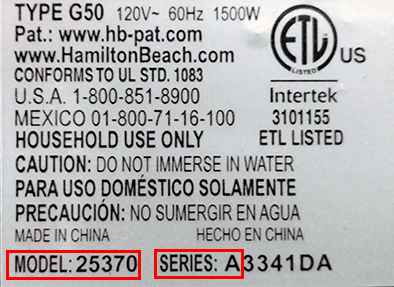
For thousands of years, people have enjoyed toasted bread. It was a great way to make stale bread more palatable, and it helped to preserve bread for later use.But technique was an issue. It is hard to get consistent results over an open flame. There had to be a better way.

Inventors in the early 1900s pondered how to make a better slice of toast. Early toasters required flipping the bread over, others used a conveyor belt type system to rotate the bread through. Finally, a pop-up toaster was invented in 1919. Exciting? Yes, but perfecting the browning of the bread was still up in the air.
It was this dilemma that kept the Hurxthal brothers up at night. Their passion to find a solution led to a patent for an “Automatic temperature control for bread toasters” and established a long legacy of toasting perfection here at Proctor Silex®.
Our first toaster, released in the mid 1920’s, was a lot like our toasters of today; simple, functional, and capable of producing a perfect piece of toast.
In the lab, one toaster pops while another begins its next cycle. The nichrome wire turns shades of orange as it warms the inside of the slot and readies to toast. A fan kicks on to help cool the first toaster for its next cycle. Hour after hour, day after day, each model is put to the test, enduring at least 6,000 cycles to be sure mechanical features are functioning to our standards.
But once the internal requirements are met, the testing is far from finished. The toasters move on to performance testing where they are used as they would normally be – in a typical kitchen. Bagels, muffins and breads are all prepared. What are we looking for? “At this stage it’s good bread color,” explained John Barnes, project engineer.
Toasting perfection is relative to the consumer, but the goal is to create crisp, browned bread with a somewhat soft middle. In the past, toast was checked visually, with toast slices lined up on a board and compared, but since we all see color differently, testing for how well a toaster browns has become more scientific.

Today, our engineers test for brownness using a bread color meter that measures the wavelength coming off the caramelizing sugars on the toast. “We’ve developed a light meter unit and created standards for light, a perfect medium, and dark,” said Barnes.
It is hard to say what the perfect piece of toast is since all tastes differ, so Barnes says he and his team of engineers are looking for consistent color across the entire face of the toast and optimum performance, whether you use the toaster for one slice or many.
Overall, thousands of slices are made to check toaster operation and performance before they reach your home. This may seem like a lot of bread, but toasters are much more complex than they appear. More than 100 parts go into the building of even the most basic toaster. Those with more features could have an excess of 250 parts.
Today’s toasters are like little computers. A small microprocessor placed inside runs the system and lets us provide you with features like automatic shutoff.
Taking the technology, both new and old, to deliver quality products at reasonable prices is our job, just like it was nearly a century ago.
As we go forward, Proctor Silex will continue to meet your needs. We make a lot more toasters today than we made back in 1927, but our commitment to quality remains.
What makes Proctor Silex kitchen appliances simply better? Our high-quality, easy-to-use appliances give you exactly what’s essential, every time. No frills, no fuss, no guesswork, no surprises. Just what you need, when you need it.
Sign up to receive information on new products and special offers.


